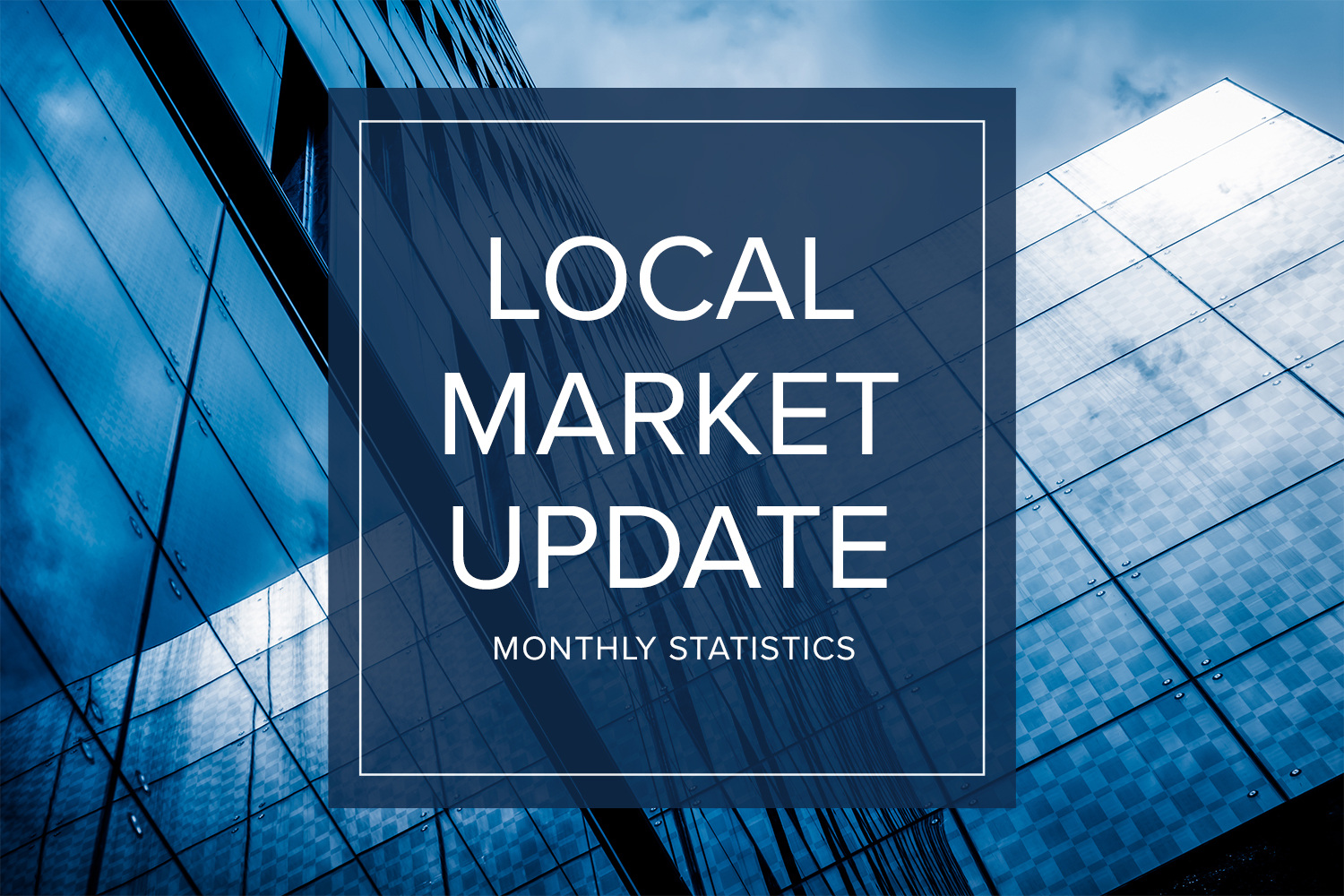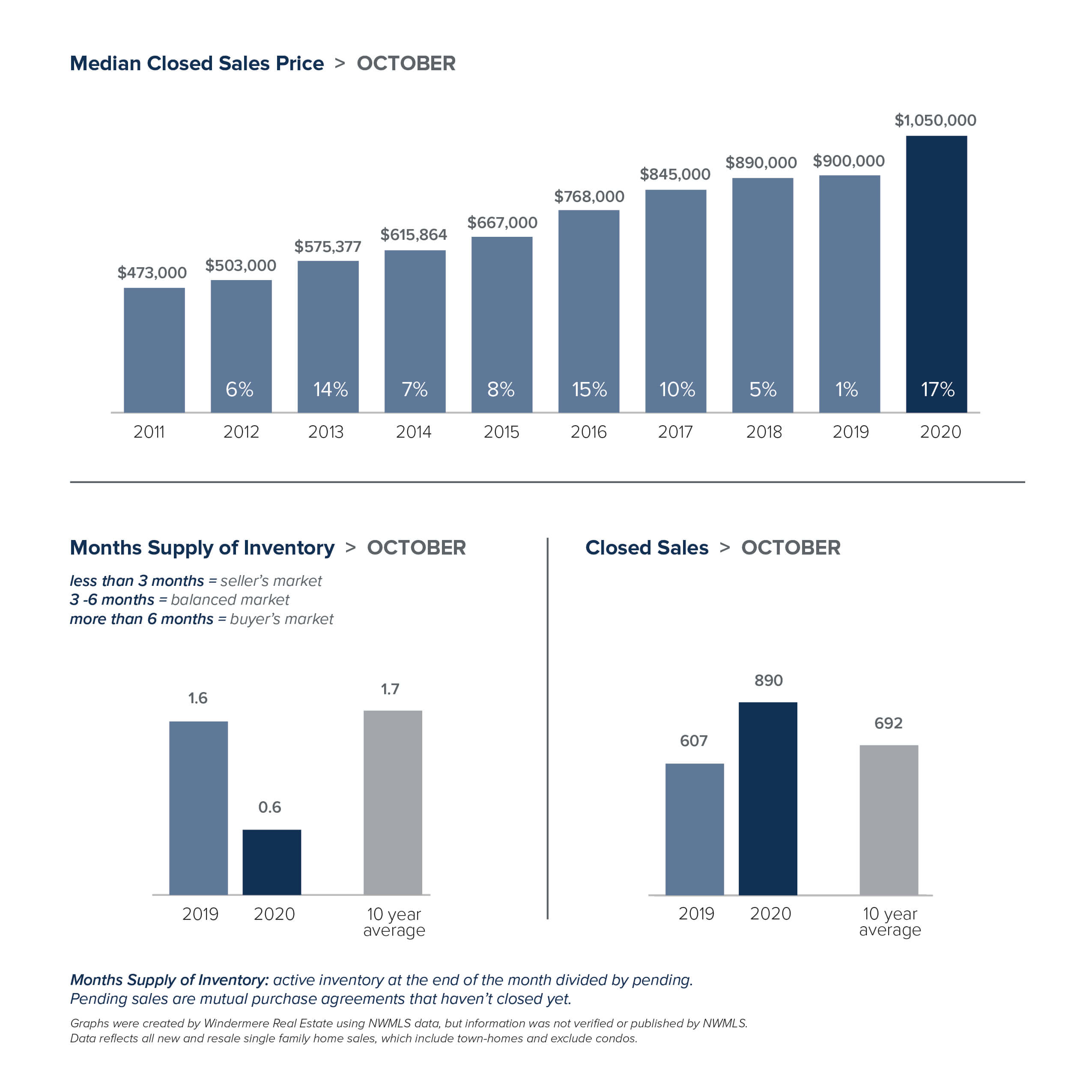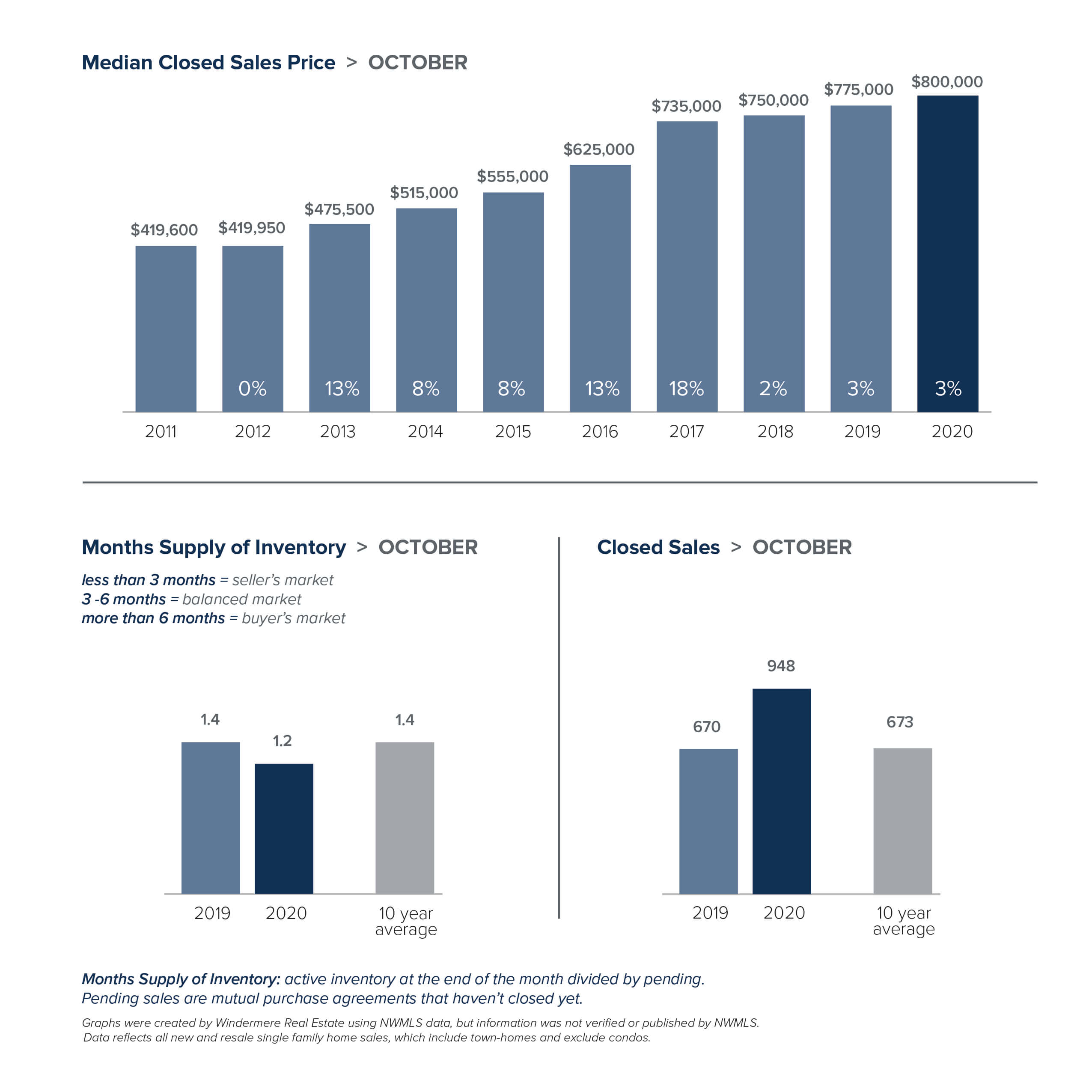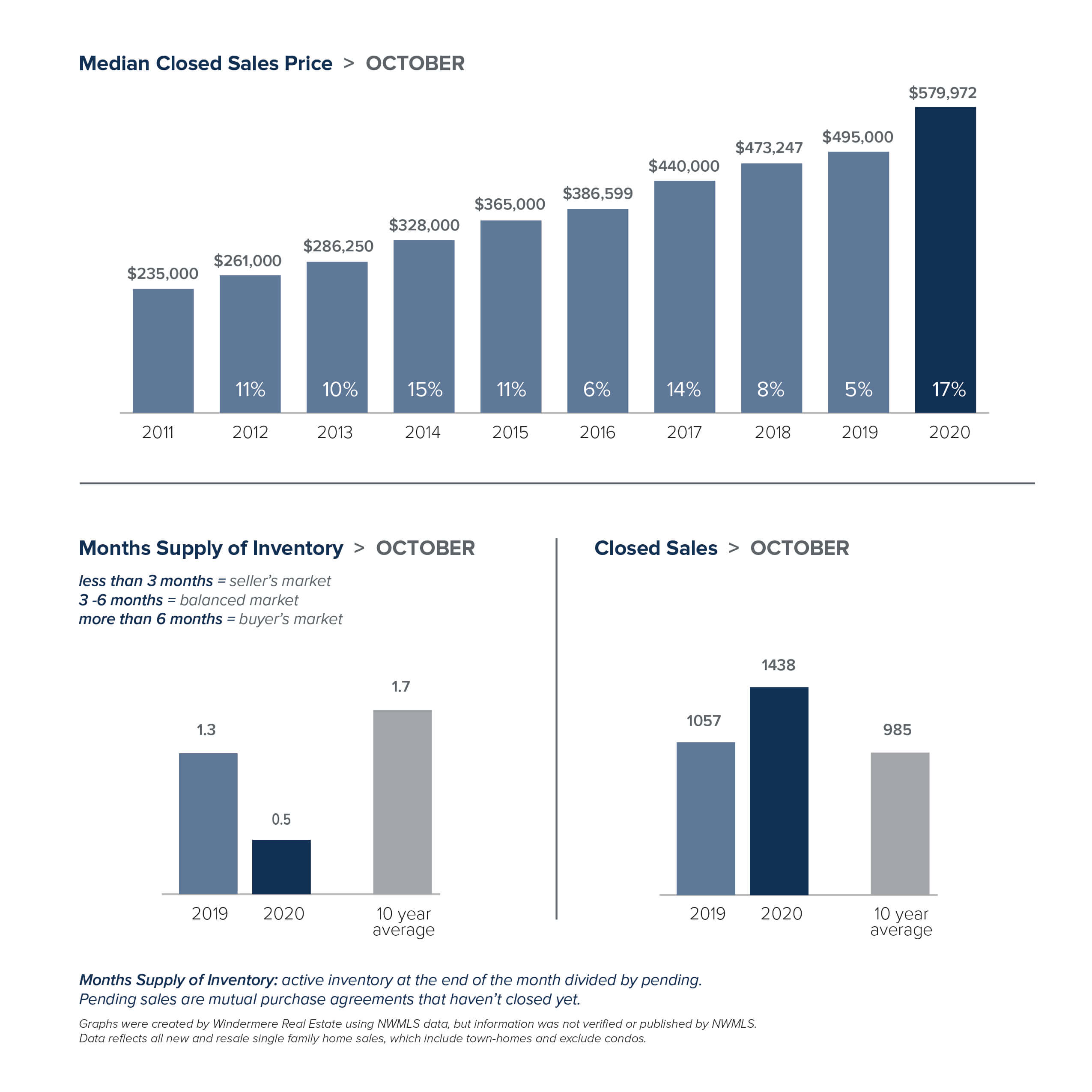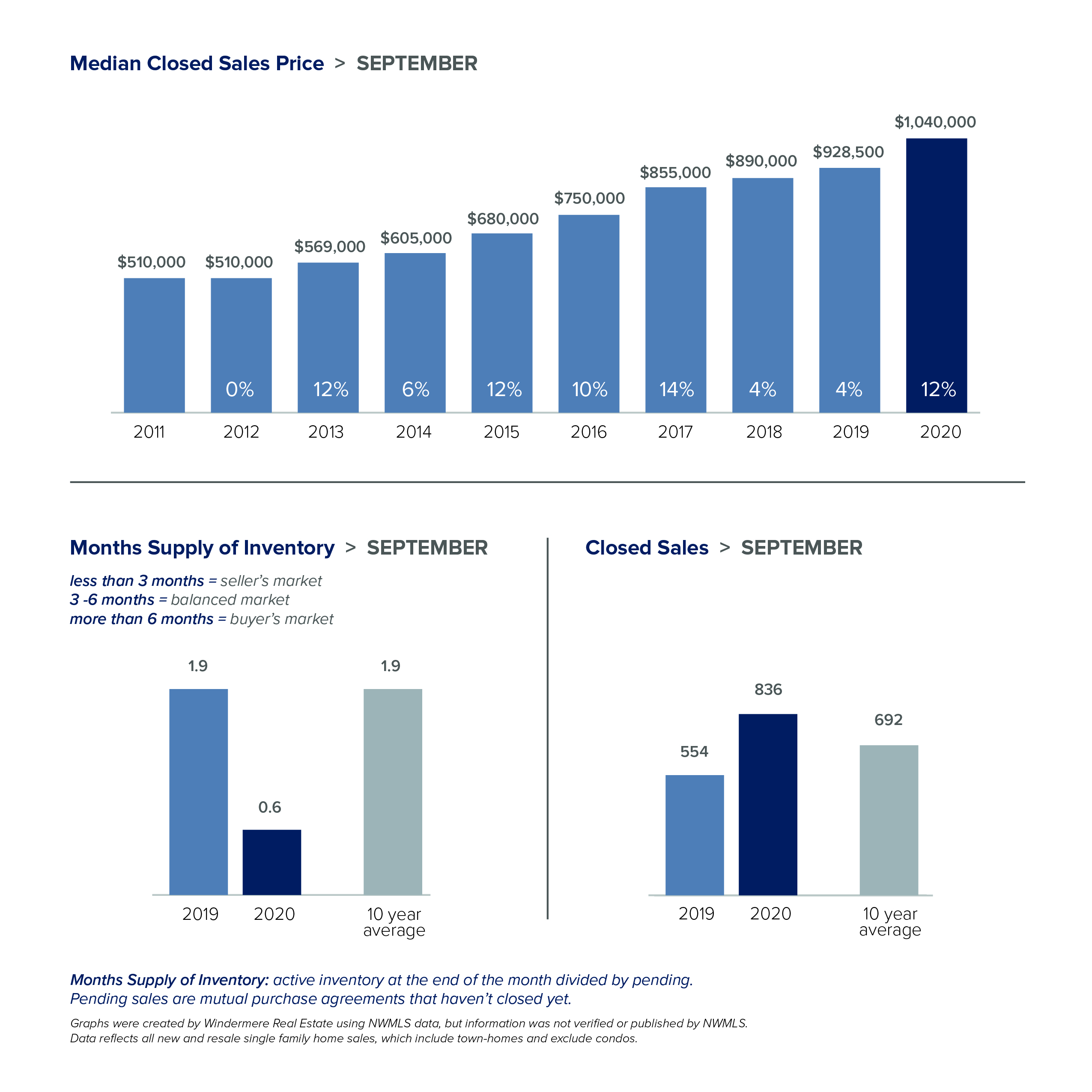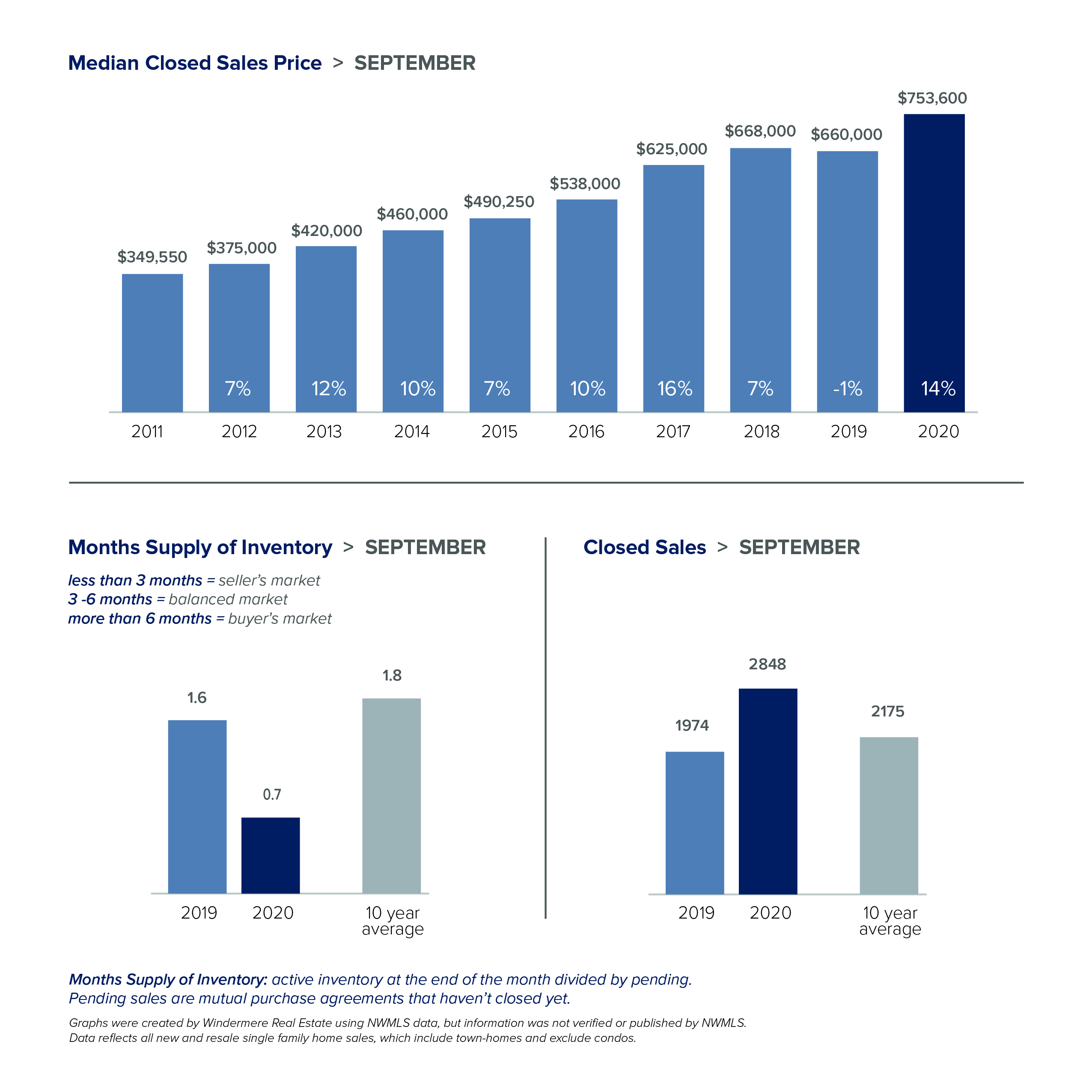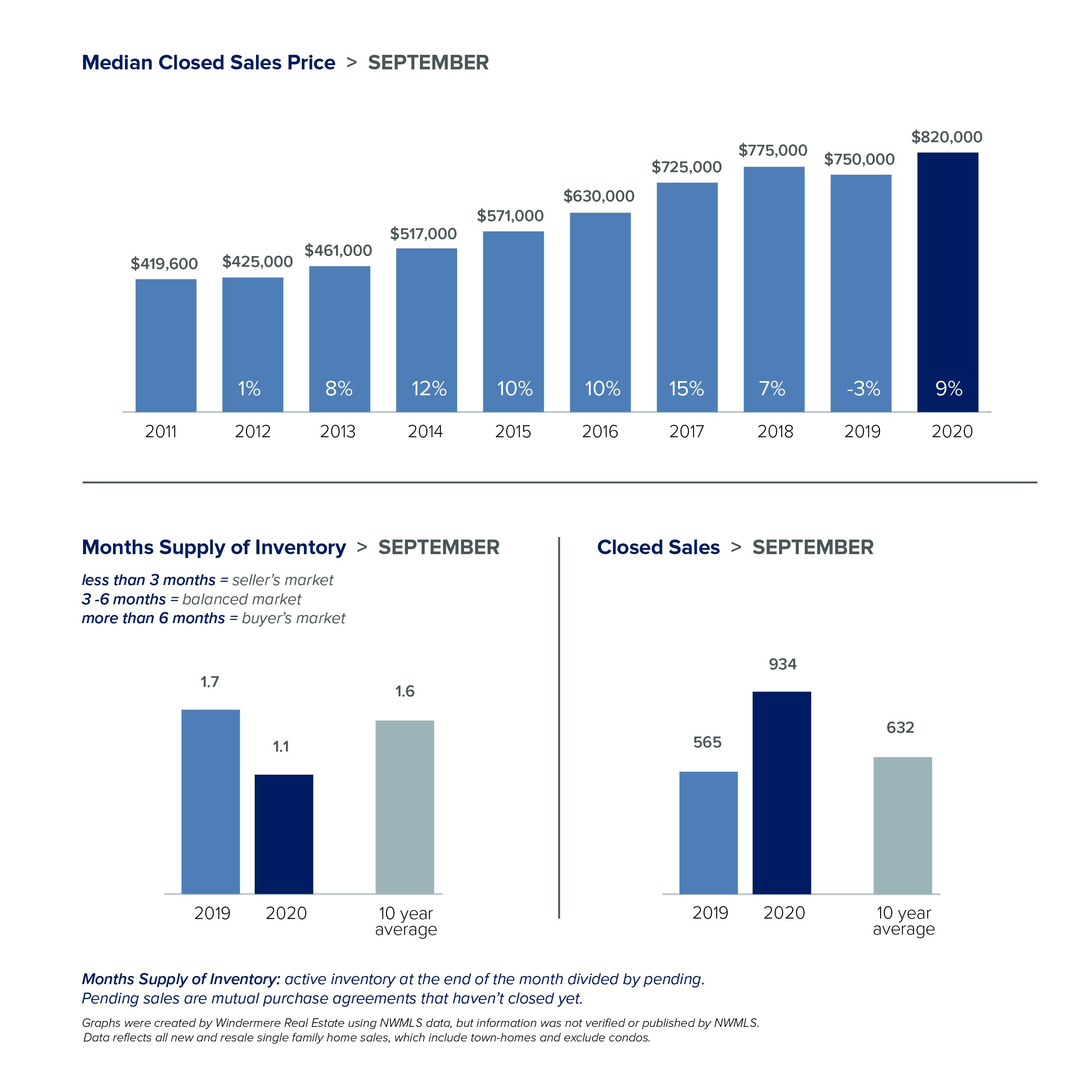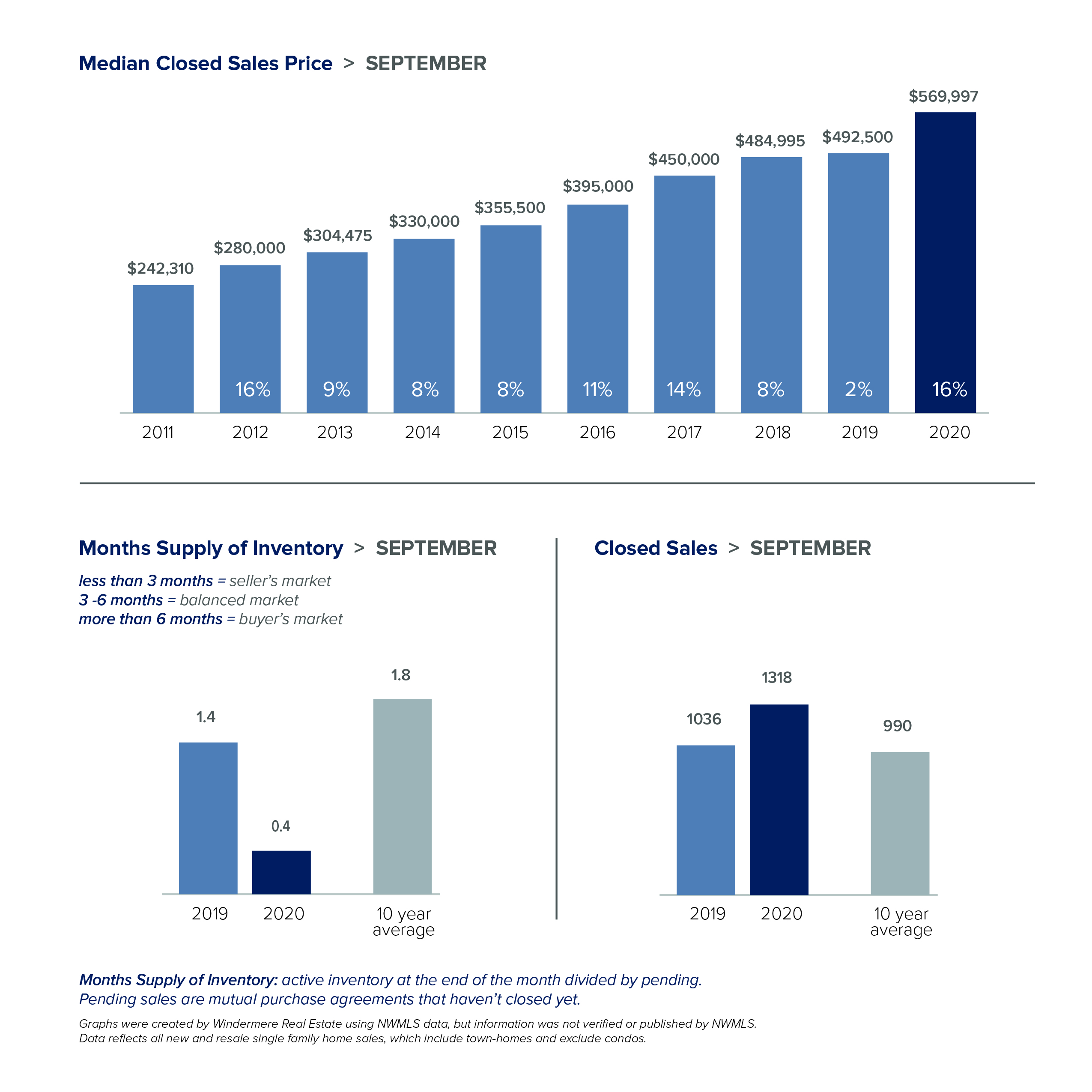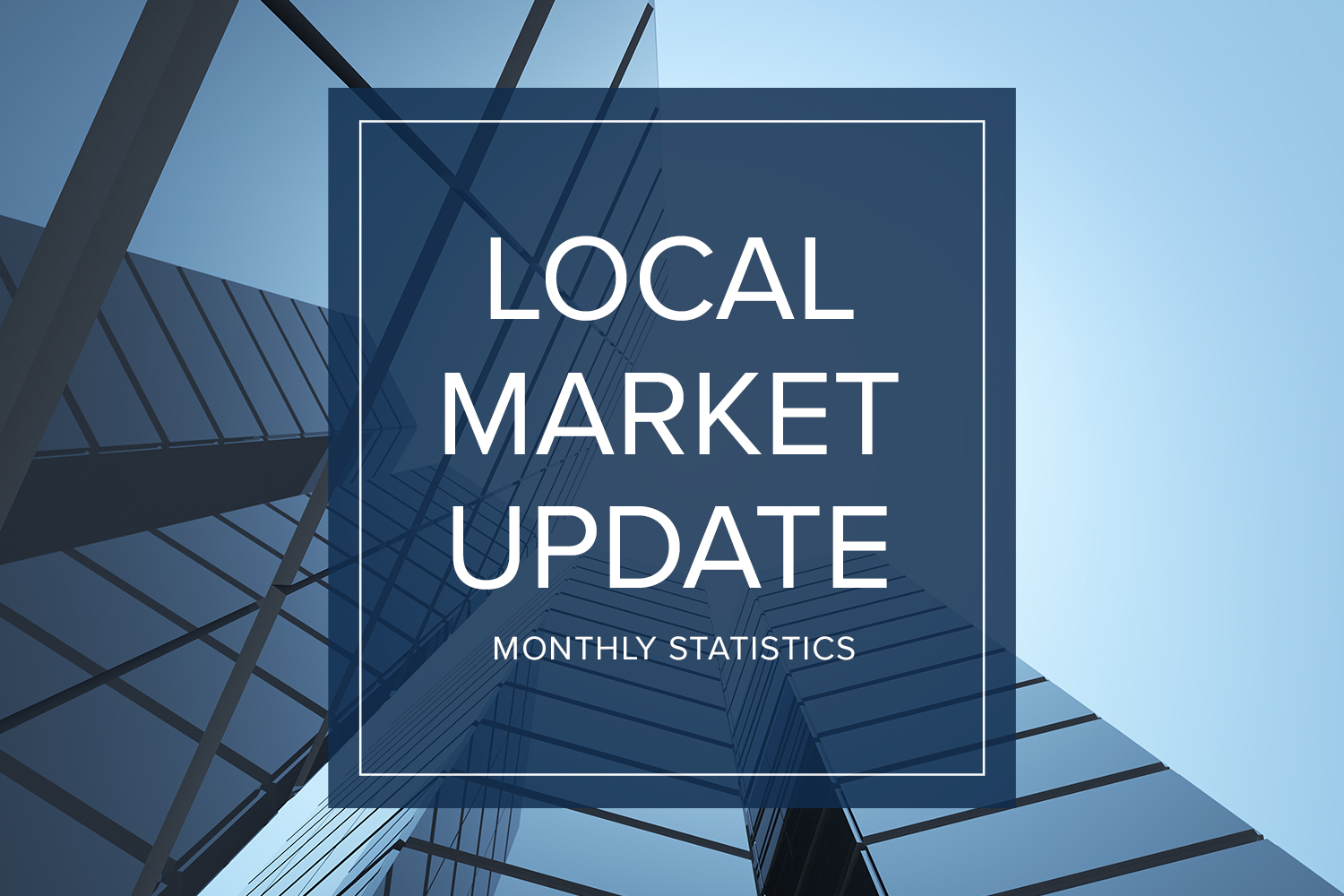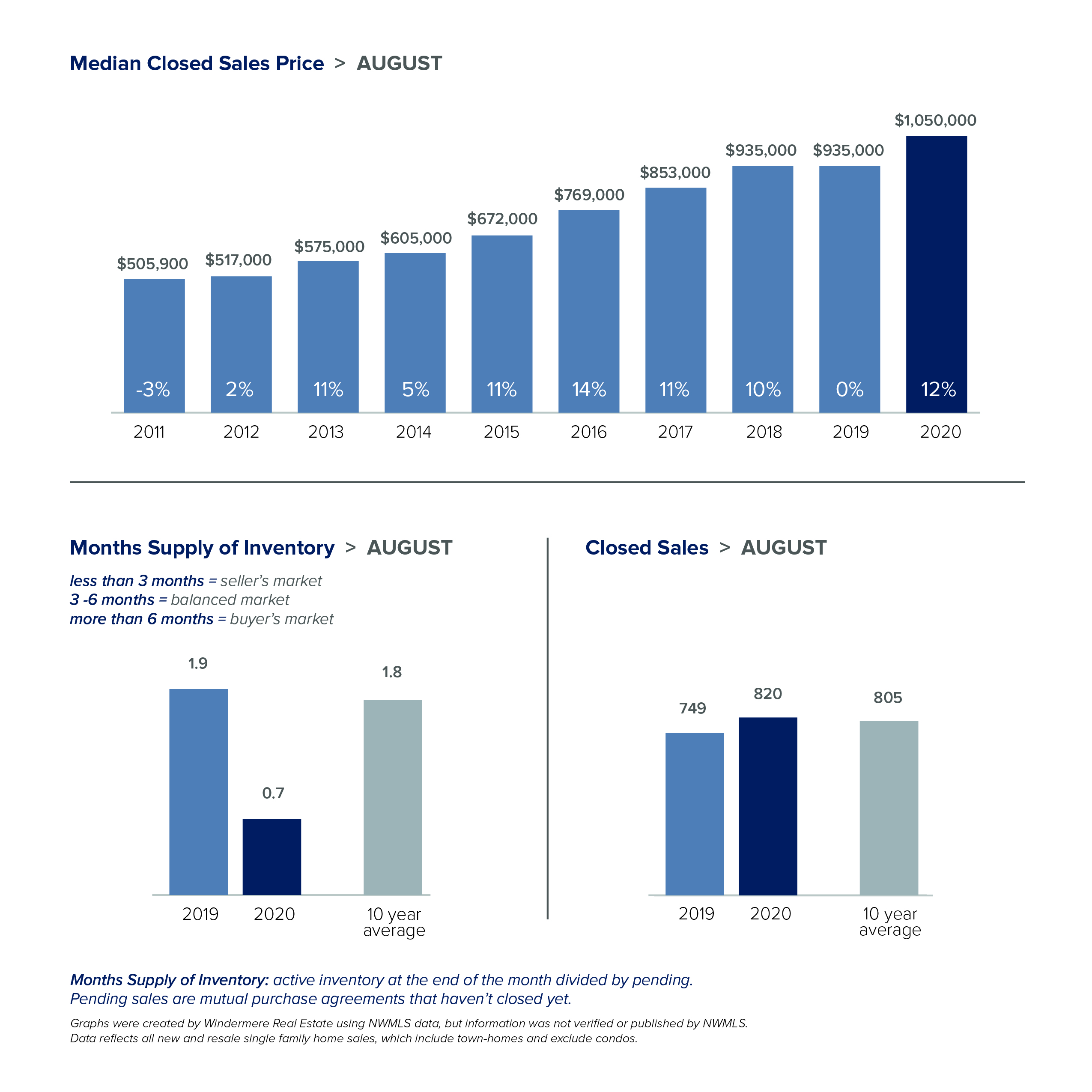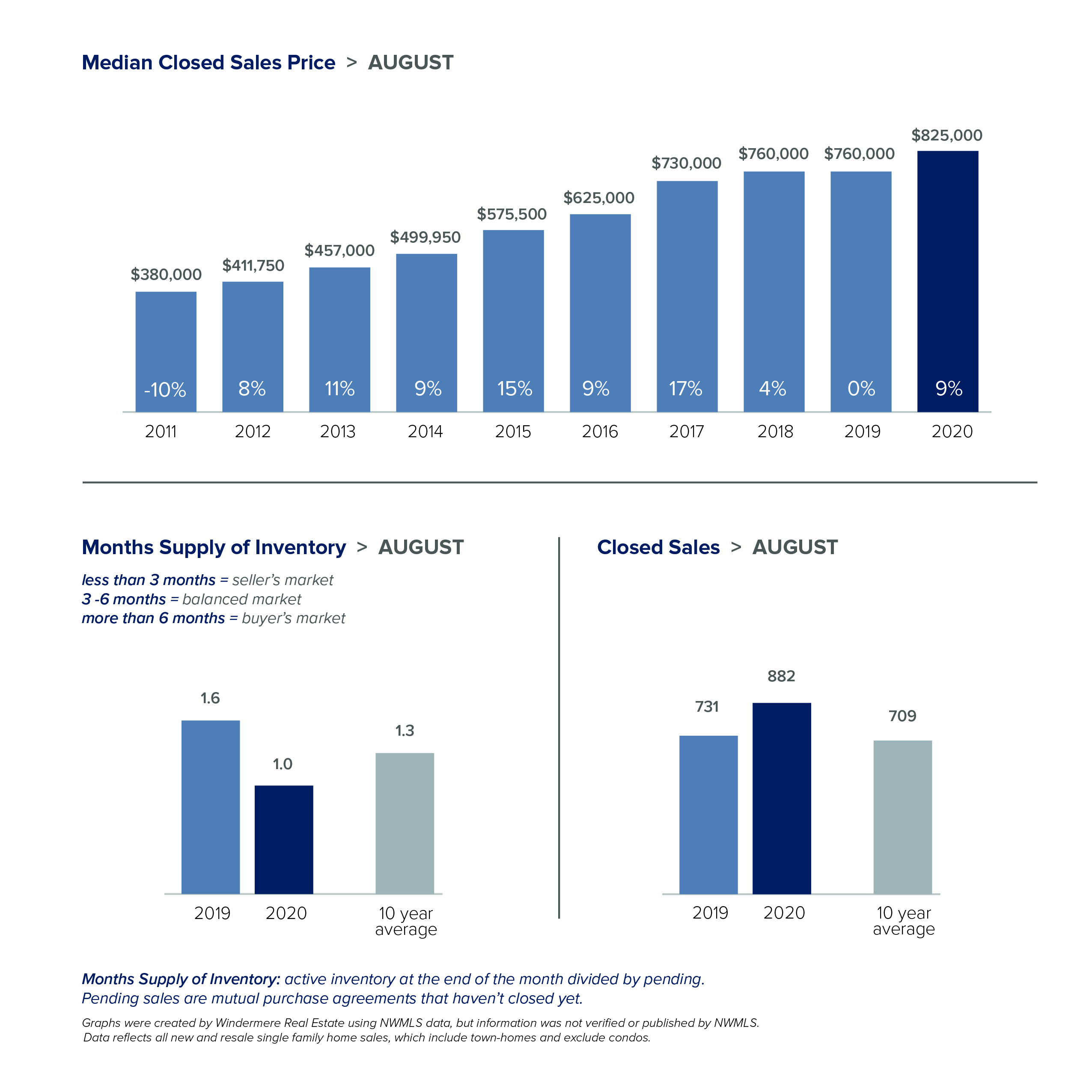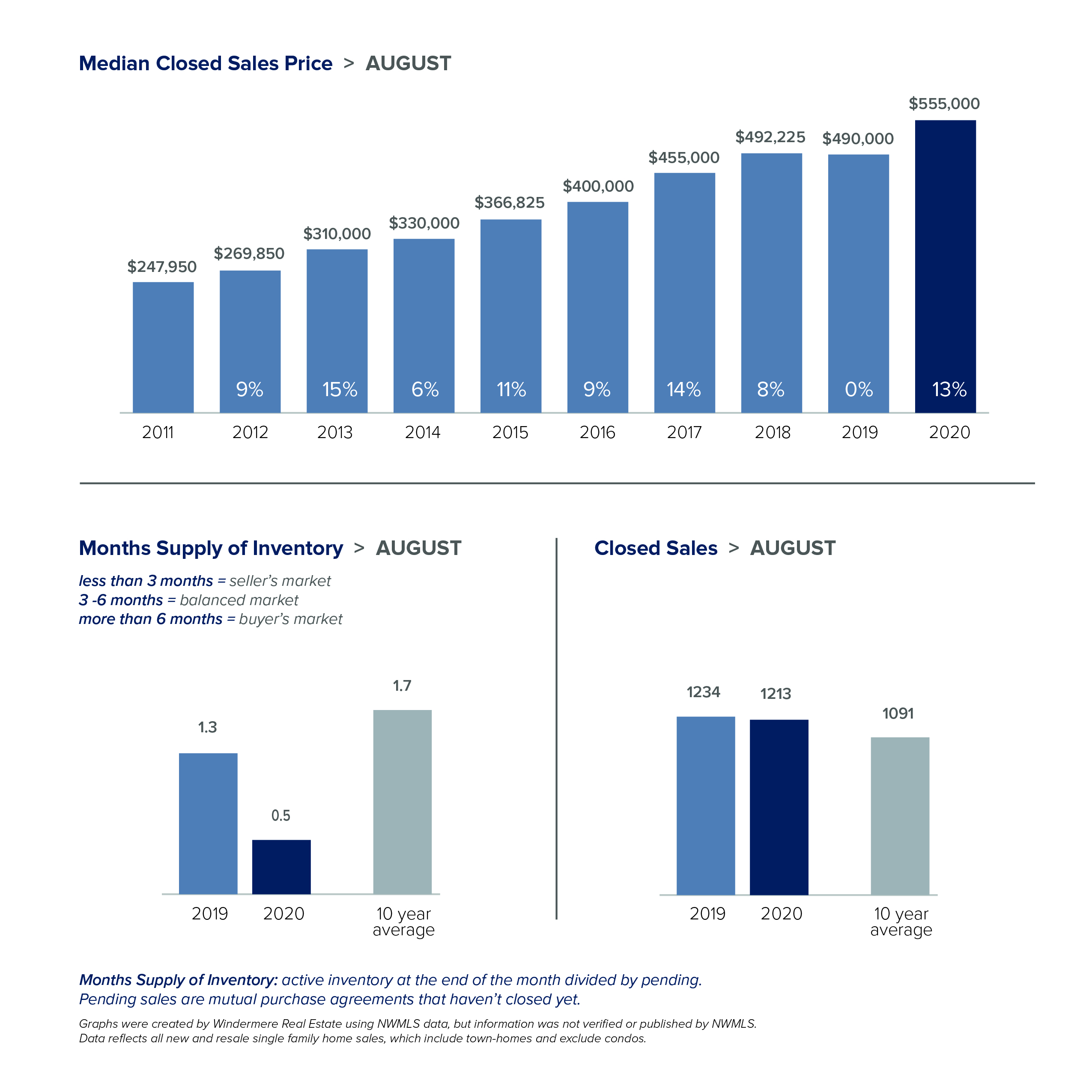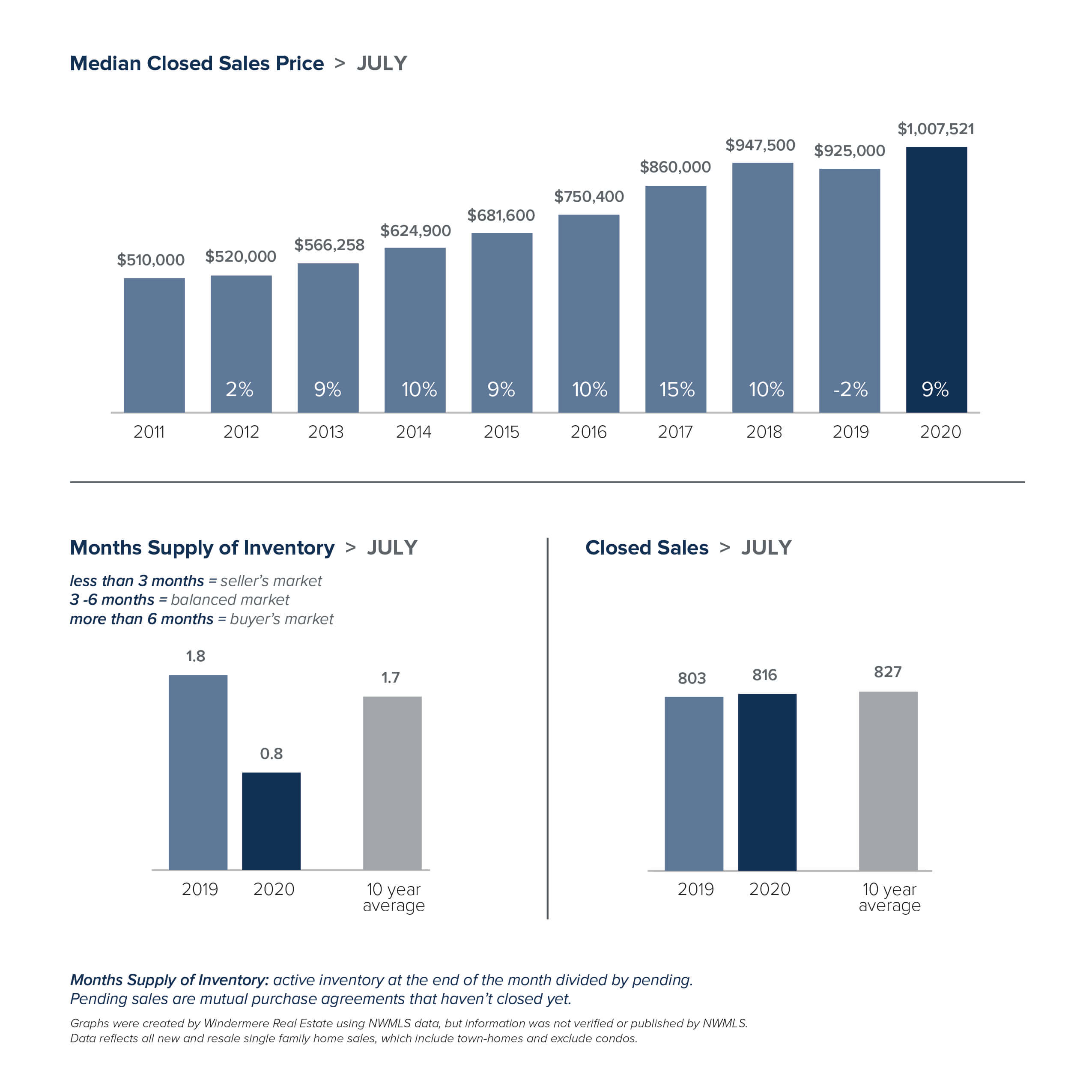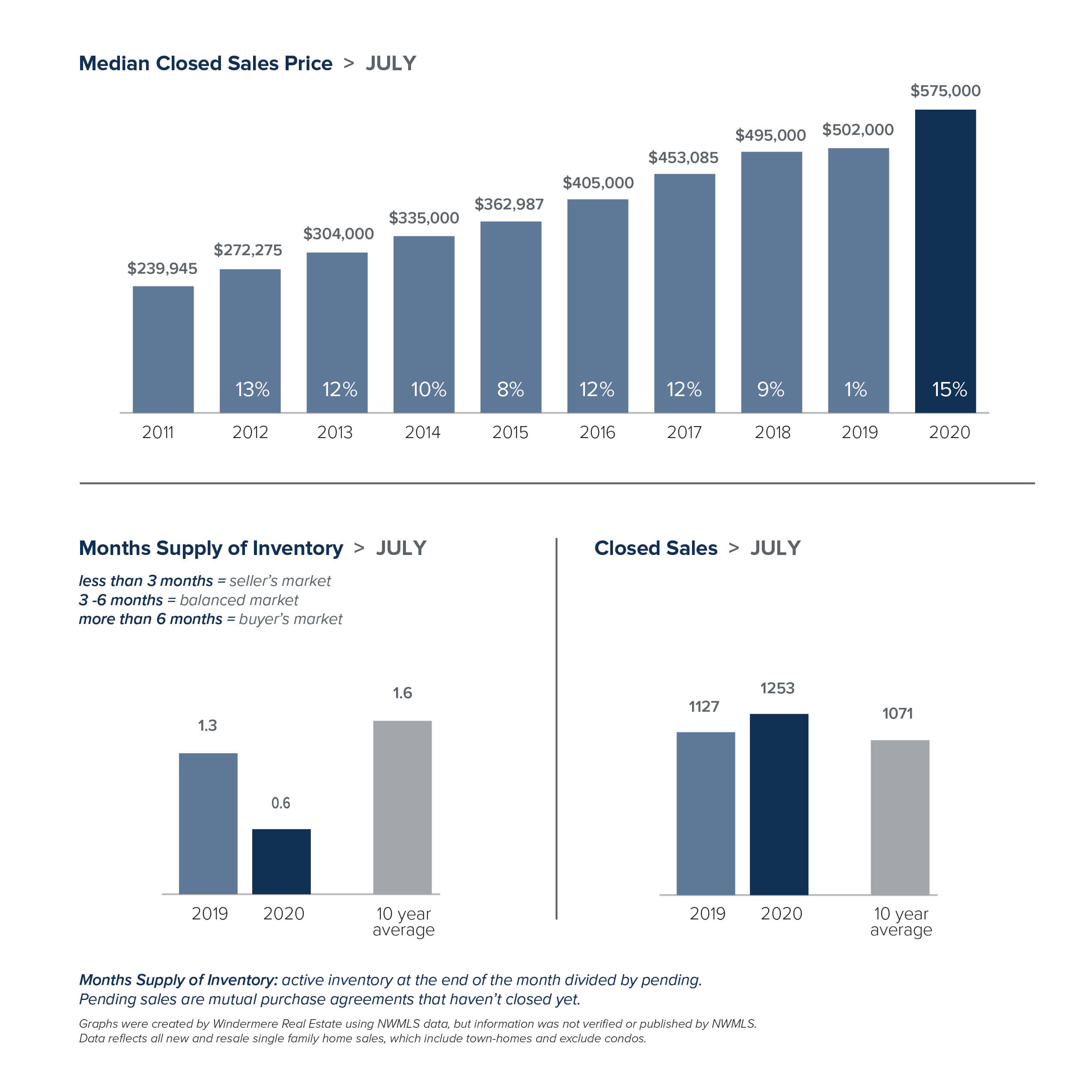Matthew Gardner’s 2021 Housing Forecast

Every Monday since the start of the pandemic, Windermere’s Chief Economist, Matthew Gardner, has provided insights into the current state of the housing market through his video series “Mondays with Matthew.” Gardner’s latest release represents the last of his videos for 2020, while offering his 2021 forecast in the US housing market.
Throughout 2020, mortgage rates hit historic lows, largely due to the impact COVID-19 had on the housing market. These low rates drove already high demand for housing even higher, and Gardner does not predict mortgage rates will rise significantly in 2021.
His current forecast sees mortgage rates dropping to their lowest rate in the current quarter at 2.83%, and rising to about 3.08% by the fourth quarter of 2021.
As far as home sales for 2021, Gardner is predicting a large increase in home sales (he covers new construction separately). His forecast puts home sales up by 6.9%, a level that hasn’t been seen since 2006.
In conjunction with this, Gardner predicts a rise in housing inventory, as people who can work remotely move farther away from their offices, or those whose homes aren’t conducive to remote work seek out a better living arrangement.
But Gardner also pragmatically points out that a “mass exodus” completely away from urban centers is unlikely, as many workers may find themselves with a flexible blended arrangement of remote work and a few days in the office per week.
In terms of home prices, Gardner predicts they will continue to rise, but slowly. His 2021 prediction caps out at a 4.1% increase, partially because prices have already risen so dramatically this year that it may become an issue of affordability.
With the rising demand for housing inventory, Gardner predicts that new construction starts for single-family homes will rise by a sizeable 16.4%. This is great news for builders, and also for buyers, as increased inventory may help to alleviate the incredible demand the market has been experiencing.
Along with increased starts, Gardner is anticipating an increase of 18.7% in new home sales for 2021—again reaching a level the market hasn’t seen since 2006.
Finally, Gardner touched on the number of homes in forbearance. As of the end of November 2020, 2.76 million homeowners are in forbearance—but that number is down almost 2 million since May 2020, a drop of 42%.
Gardner does predict that foreclosures will rise in 2021, but he cautions that brokers shouldn’t panic. Though there is temptation to compare this situation with the housing bubble collapse of 2008, Gardner predicts that the actual number of foreclosures will be very mild in comparison.
When the pandemic began in March, the housing market overall was in a much healthier place than it was prior to 2008. Additionally, lenders now are more likely to cooperate with homeowners to help them stay in their homes, and homeowners also have the option to sell and get the equity out of their homes if necessary.
While no one can predict the future with complete accuracy, Gardner’s predictions give us a road map to work from as we approach the new year.
Read the full article on Windermere.com.
This post originally appeared on GettheWReport.com
Local Market Update – December 2020
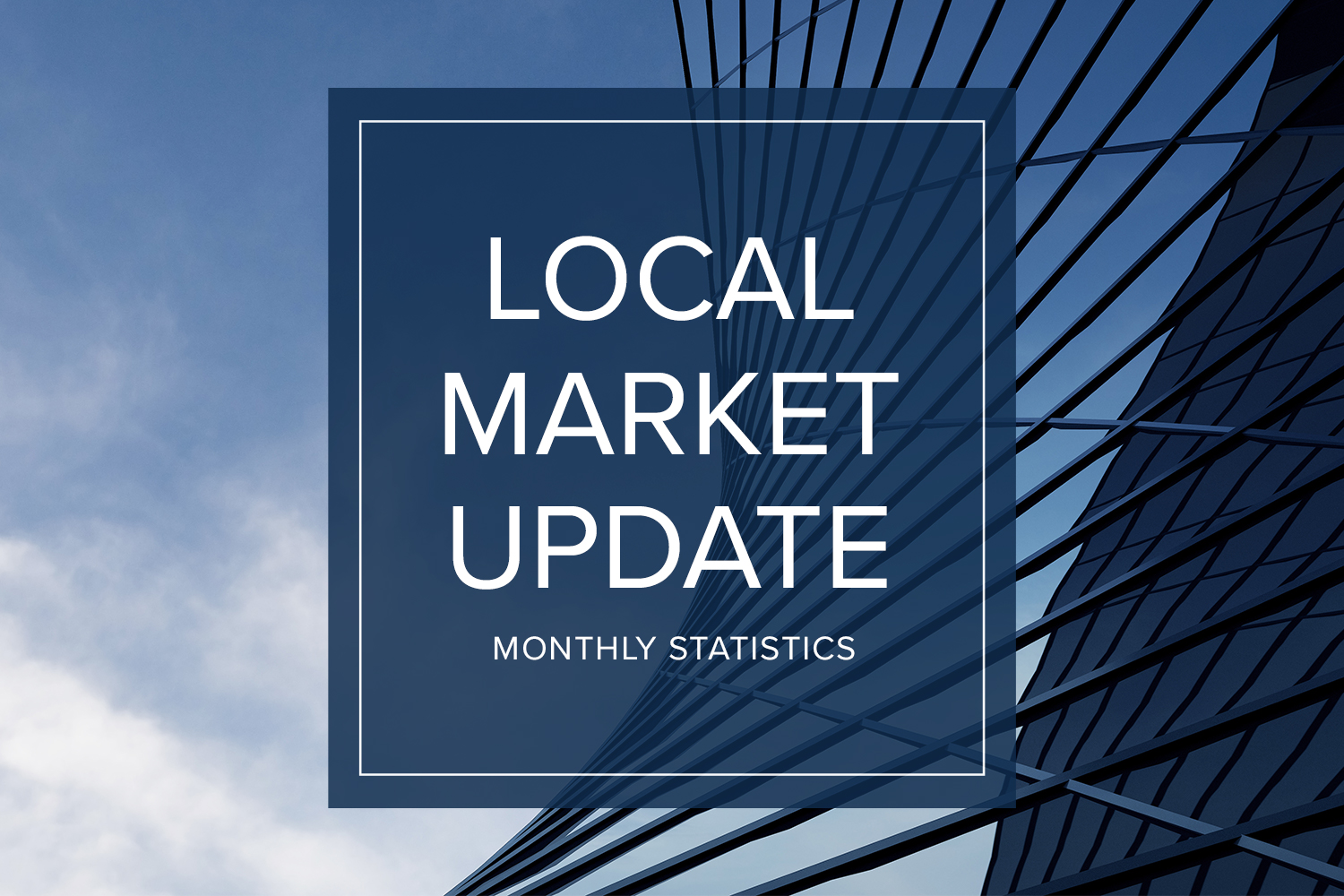
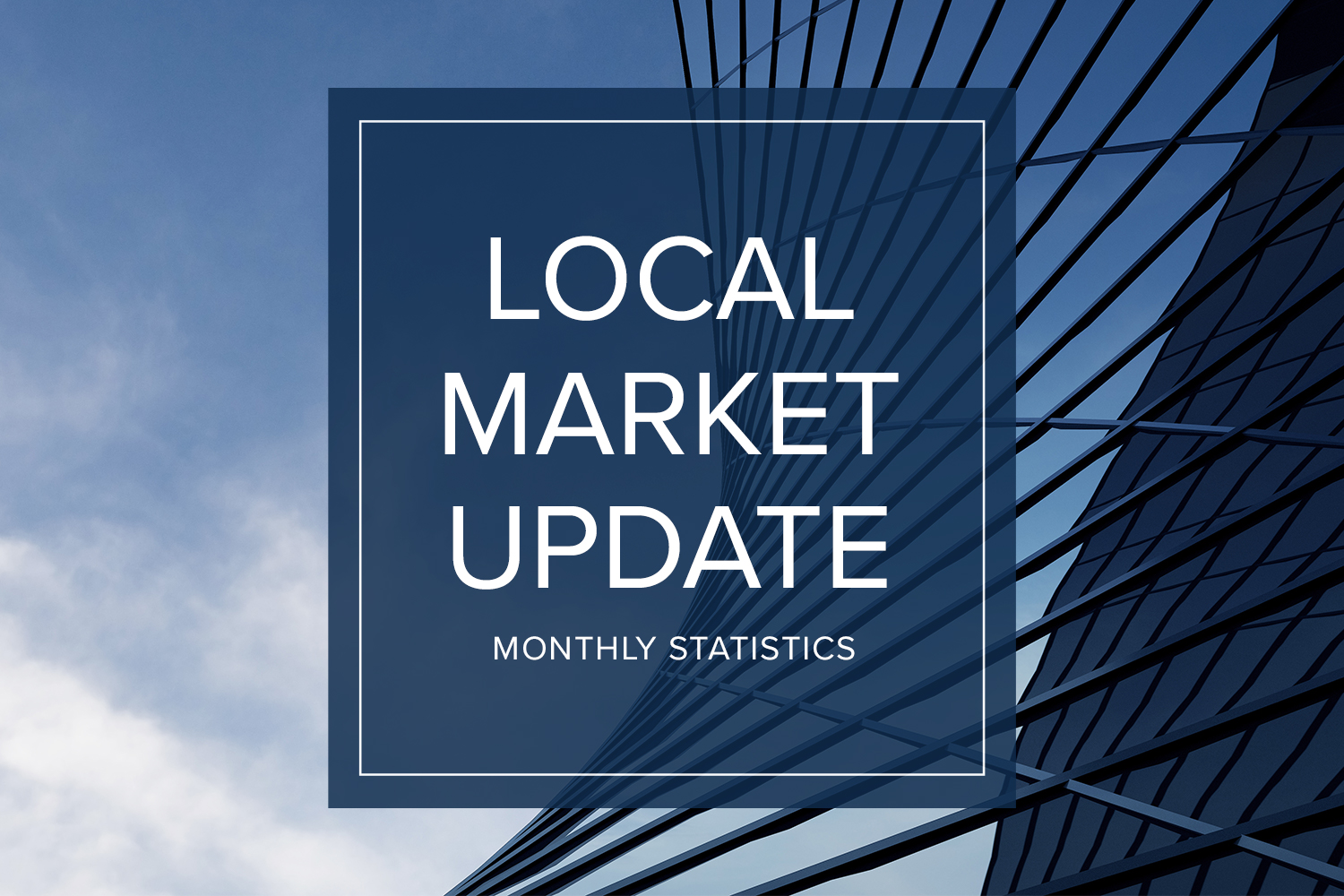
Nothing about 2020 is normal, and that includes real estate trends. The housing market typically slows significantly during the holiday season, but that is not the case this year. Buyer interest is strong, sales are up, and prices have followed suit.
A recent report ranked our area as the most competitive real estate market in the country, with 71% of homes selling within two weeks. While the number of new listings in November were up compared to a year ago, there just wasn’t enough inventory to meet the current surge in demand.
In King County there were 37% fewer single-family homes on the market – 1,621 homes this November vs. 2,592 a year ago. Inventory in Snohomish County is even more strained. At the end of the month there were just 416 homes for sale as compared to 1,204 a year ago, a 65% drop. Both counties had about a two week supply of homes at the end of November. A four month supply of inventory is considered balanced. Buyers in the market for a condominium in King County had much more options. Condo inventory was up 39% over last year.
The inventory-starved market sent home prices higher. The median single-family home price in King County was up 10% over a year ago to $730,500. Home prices in Snohomish County rose 14% to $566,000. In a survey of homebuyers looking for a home during Covid-19, 82% said they would go over budget to get their ideal home. Record-low interest rates have helped soften the blow of soaring prices a bit. According to Freddie Mac, rates on a 30-year fixed-rate mortgage fell to their lowest level, at 2.71%, for the 14th time this year.
With low inventory and high demand, buyers need to be ready to compete. That means being pre-approved or willing to offer cash, and working with an agent on a plan that includes counter-offers, escalation clauses and other strategies to help win the sale. As many consider working remotely long-term, our home has become more important to us than ever.
The charts below provide a brief overview of market activity. If you are interested in more information, every Monday Windermere Chief Economist Matthew Gardner provides an update regarding the impact of COVID-19 on the US economy and housing market. You can get Matthew’s latest update here.
EASTSIDE
KING COUNTY
SEATTLE
SNOHOMISH COUNTY
VIEW FULL SNOHOMISH COUNTY REPORT
This post originally appeared on GetTheWReport.com
Local Market Update – November 2020

The number of people who can work remotely may be changing the way we view our homes, but one trend has not changed. The local housing market in October remained unseasonably hot. And that doesn’t show signs of changing any time soon.
October saw continued low inventory and record-level sales, with the number of sales exceeding that of 2019 year-to-date.
While new listings are on the rise, they are being snapped up quickly and many homes are selling in a matter of days. In King County there were 38% fewer single-family homes on the market as compared to a year ago. Snohomish County had 59% fewer listings. A four-month supply of homes for sale is considered a balanced market, but King and Snohomish counties currently have less than one month of supply.
With supply unable to keep up with demand, home prices are escalating at double-digit rates. The median single-family home price in King County rose 14% over a year ago to $745,000. Prices in Snohomish County jumped 17% year-over-year to a record high of $579,972. About half the homes that closed in October sold for over the asking price as compared to about a quarter of the homes the same time last year.
The real estate market here is uncommonly resilient. Growing employment in major tech industries and an enviable quality of life have made our region one of the fastest growing areas in the country. With interest rates remaining at record lows, we may well skip the traditional slowing in the winter market altogether.
The charts below provide a brief overview of market activity. If you are interested in more information, every Monday Windermere Chief Economist Matthew Gardner provides an update regarding the impact of COVID-19 on the US economy and housing market. You can get Matthew’s latest update here.
EASTSIDE
KING COUNTY
SEATTLE
SNOHOMISH COUNTY
VIEW FULL SNOHOMISH COUNTY REPORT
This post originally appeared on GetTheWReport.com
Western Washington Real Estate Market Update – Q3 2020

The following analysis of the Western Washington real estate market is provided by Windermere Real Estate Chief Economist Matthew Gardner. We hope that this information may assist you with making better-informed real estate decisions. For further information about the housing market in your area, please don’t hesitate to contact your Windermere agent.
REGIONAL ECONOMIC OVERVIEW
Employment numbers in Western Washington continue to improve following the massive decline caused by COVID-19. For perspective, the area shed more than 373,000 jobs between February and April. However, the recovery has been fairly robust: almost 210,000 of those jobs have returned. Unemployment levels remain elevated; the current rate is 8.2%. That said, it is down from 16.6% in April. The rate, of course, varies across Western Washington counties, with a current low of 7.2% in King County and a high of 11.2% in Grays Harbor County. The economy is healing, but the pace of improvement has slowed somewhat, which is to be expected. That said, I anticipate that jobs will continue to return as long as we do not see another spike in new infections.
HOME SALES
- Sales continued to improve following the COVID-19-related drop in the first quarter of the year. There were 25,477 transactions in the quarter, an increase of 11.6% from the same period in 2019, and 45.9% higher than in the second quarter of this year.
- Listing activity remains woefully inadequate, with total available inventory 41.7% lower than a year ago, but 1.6% higher than in the second quarter of this year.
- Sales rose in all but two counties, though the declines were minimal. The greatest increase in sales was in San Juan County, which leads one to wonder if buyers are actively looking in more isolated markets given ongoing COVID-19-related concerns.
- Pending sales—a good gauge of future closings—rose 29% compared to the second quarter of the year, suggesting that fourth quarter closings will be positive.

HOME PRICES
- Home-price growth in Western Washington rose a remarkable 17.1% compared to a year ago. The average sale price was $611,793.
- When compared to the same period a year ago, price growth was strongest in Mason, Island, and San Juan counties. Only one county saw prices rise by less than ten percent.
- It was even more impressive to see the region’s home prices up by a very significant 9.4% compared to the second quarter of 2020. It is clear that low mortgage rates, combined with limited inventory, are pushing prices up.
- As long as mortgage rates stay low, and there isn’t an excessive spike in supply (which is highly unlikely), prices will continue to rise at above-average rates. That said, if this continues for too long, we will start to face affordability issues in many markets.

DAYS ON MARKET
- The average number of days it took to sell a home in the third quarter of this year dropped two days compared to a year ago.
- Snohomish County was the tightest market in Western Washington, with homes taking an average of only 16 days to sell. All but two counties—Lewis and San Juan—saw the length of time it took to sell a home rise compared to the same period a year ago.
- Across the region, it took an average of 36 days to sell a home in the quarter. It is also worth noting that it took an average of 4 fewer days to sell a home than in the second quarter of this year.
- The takeaway here is that significant increases in demand, in concert with remarkably low levels of inventory, continue to drive market time lower.

CONCLUSIONS

This speedometer reflects the state of the region’s real estate market using housing inventory, price gains, home sales, interest rates, and larger economic factors.
High demand, favorable interest rates, and low supply clearly point to a seller’s market in Western Washington. As such, I am moving the needle even more in favor of sellers.
As I suggested earlier in this report, although the market is remarkably buoyant, I am starting to see affordability issues increase in many areas—not just in the central Puget Sound region—and this is concerning. Perhaps the winter will act to cool the market, but something is telling me we shouldn’t count on it.
ABOUT MATTHEW GARDNER
 As Chief Economist for Windermere Real Estate, Matthew Gardner is responsible for analyzing and interpreting economic data and its impact on the real estate market on both a local and national level. Matthew has over 30 years of professional experience both in the U.S. and U.K.
As Chief Economist for Windermere Real Estate, Matthew Gardner is responsible for analyzing and interpreting economic data and its impact on the real estate market on both a local and national level. Matthew has over 30 years of professional experience both in the U.S. and U.K.
In addition to his day-to-day responsibilities, Matthew sits on the Washington State Governors Council of Economic Advisors; chairs the Board of Trustees at the Washington Center for Real Estate Research at the University of Washington; and is an Advisory Board Member at the Runstad Center for Real Estate Studies at the University of Washington where he also lectures in real estate economics.
This post originally appeared on the Windermere.com Blog
Local Market Update – October 2020
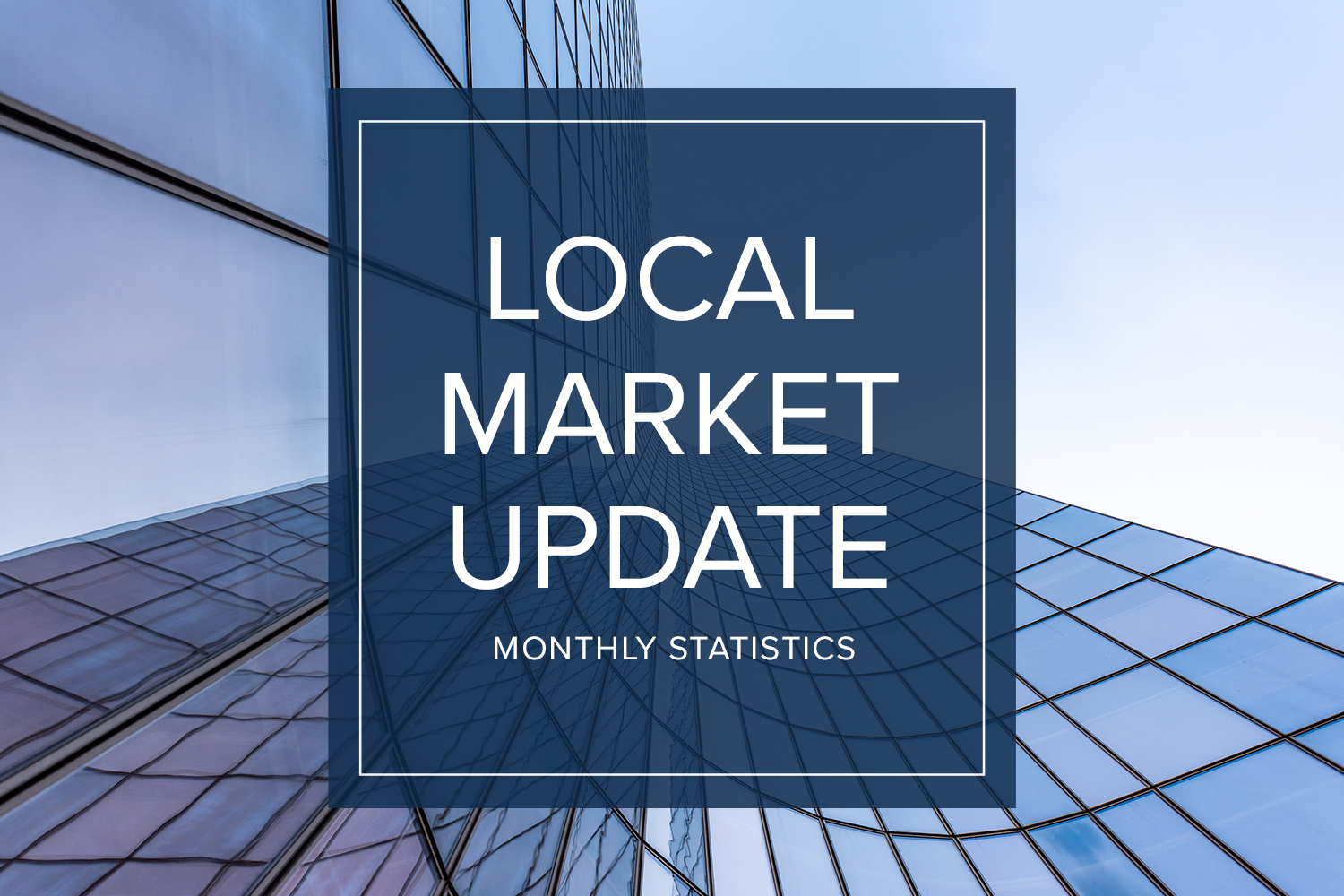
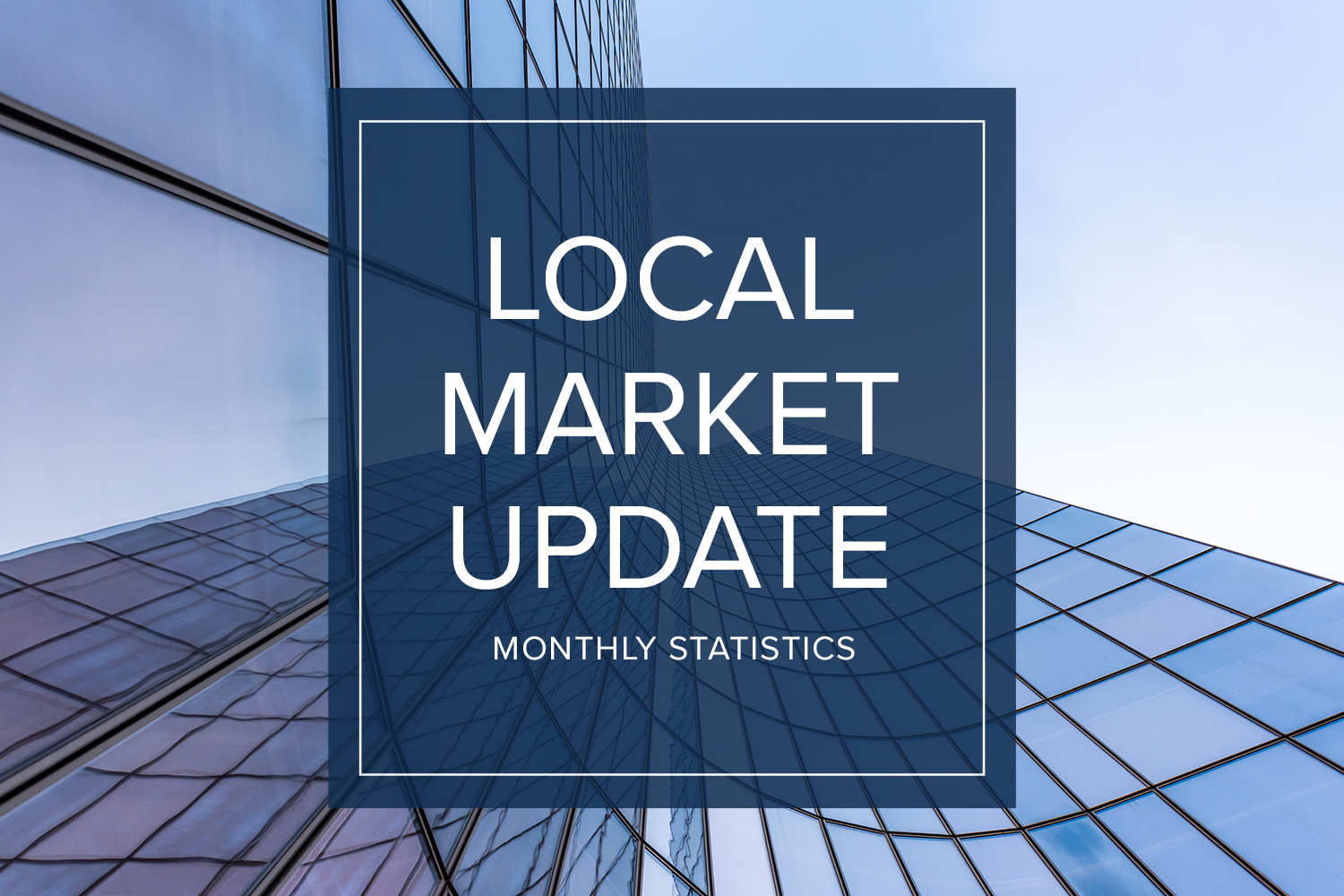
While daily life may seem unpredictable, the local real estate market remains extremely stable. Activity in September acted more like the traditional peak spring market with home sales soaring and prices hitting record highs. Inventory remains very tight and new listings are selling quickly in every price range.
There just aren’t enough homes on the market to meet demand. King County had about half the inventory of a year ago. Snohomish County had 63% fewer available homes. On the other hand, the number of condos on the market in King County jumped by 24% over last September. Brokers attribute the flood of new inventory to COVID remote workers looking to trade their in-city condo for more living space. Despite the increase in inventory, condo prices rose 8% in September and pending sales — the best indicator of current demand — shot up 36% over the same period last year.
The slim supply of single-family homes means bidding wars and all-cash offers were the norm, driving prices to record highs. King County saw the third consecutive month of record-setting values. The median home price hit $753,600 in September, a 14% jump over last year. Prices in Snohomish County soared 16% from a year ago to $569,997, just shy of its all-time high of $575,000. For both counties, half the homes sold for over list price in September as compared with just a quarter of the homes a year ago.
The market doesn’t show signs of cooling off any time soon. In September the greater Northwest area saw the highest number of transactions since June 2018. Pending sales were up 32% in King County and 29% in Snohomish County. Interest rates continue to be at historic lows. With the area posting some of the fastest population growth in the country, expect the market to stay unseasonably hot.
The charts below provide a brief overview of market activity. If you are interested in more information, every Monday Windermere Chief Economist Matthew Gardner provides an update regarding the impact of COVID-19 on the US economy and housing market. You can get Matthew’s latest update here.
EASTSIDE
KING COUNTY
SEATTLE
SNOHOMISH COUNTY
VIEW FULL SNOHOMISH COUNTY REPORT
This post originally appeared on GettheWReport.com
Windermere Foundation Has Raised over $825,000 This Year!


Image source: Shutterstock
The first half of 2020 has brought uncertain times and unprecedented change, and across our network, our agents and offices have rallied with their communities through the challenges of the COVID-19 pandemic. We’ve seen offices come together in support of their neighbors by providing meals to frontline workers, donating to local food banks, and giving their time in support of low-income and homeless families impacted by COVID-19. So far this year, we’ve raised over $825,000, with over $500,000 coming in second quarter alone, bringing the total raised by the Windermere Foundation to $41.8 million.
Here’s how some of our offices have served their communities during the COVID-19 pandemic:
Sedro Woolley & Mount Vernon, WA
Over the course of the first half of the year, the Windermere Sedro Woolley and Windermere Mount Vernon offices have donated more than $5,000 combined to the Helping Hands Food Bank to help their mission of providing local families with healthy meals through the pandemic.
Gearhart & Cannon Beach, OR (Windermere Realty Trust)
In a joint effort through Windermere Realty Trust, the Oregon Coast offices of Cannon Beach and Gearhart raised $2,000 for the organization Food 4 Kids. Food 4 Kids’ goal is to supply elementary and middle school students in the Seaside School District with supplementary weekend meals during the school year, currently feeding 235 children.
Penrith Home Loans
Earlier this year, Windermere’s mortgage partner, Penrith Home Loans, donated a total of $12,000 to the Windermere Foundation.
“The Windermere Foundation’s dedication to supporting low-income and homeless families in our communities aligns with the personal values of the employees who make up Penrith Home Loans,” said Maya Dartiguenave, Marketing Manager at Penrith Home Loans.
Penrith’s donations supported the organizations Hopelink and Share Vancouver. Hopelink was chosen by Penrith because of their holistic approach to helping people out of poverty and its mission “to promote self-sufficiency for all members of our community.” Share Vancouver was chosen because of its commitment to making Vancouver, Washington a home for everyone in the community. Examples of their work include employing an outreach team directly on the streets of Vancouver, providing emergency shelters, offering free meals to hungry children and subsidized housing to low-income families.

Neighbors in Need
Between April 21 and May 5, the entire Windermere network came together to support local food banks through our Neighbors in Need fundraising campaign. Offices were challenged to raise $250,000, to be matched by the Windermere Foundation, for a total goal of $500,000. While coping with increased demand and a bottlenecked pipeline of food supply due to COVID-19, food banks were—and continue to be—desperate for funds to continue to serve those in need. Neighbors in Need surpassed the original goal of $500,000, raising a total of $690,000, and helping hundreds of food banks.
“I’m incredibly proud of how our offices and the community came together to raise much needed money and awareness to help food banks keep up with unprecedented needs,” said Windermere Foundation Executive Director, Christine Wood. “I hope we inspire others to do the same.”
These are just a few examples of how the donations flowing through the Windermere Foundation propel us forward in our mission to support low-income and homeless families in the communities across the Western U.S. If you’d like to help support organizations and programs in your community, please click the Donate button.
To learn more about the Windermere Foundation, visit WindermereFoundation.com.
This post originally appeared on the Windermere.com Blog
Local Market Update – August 2020
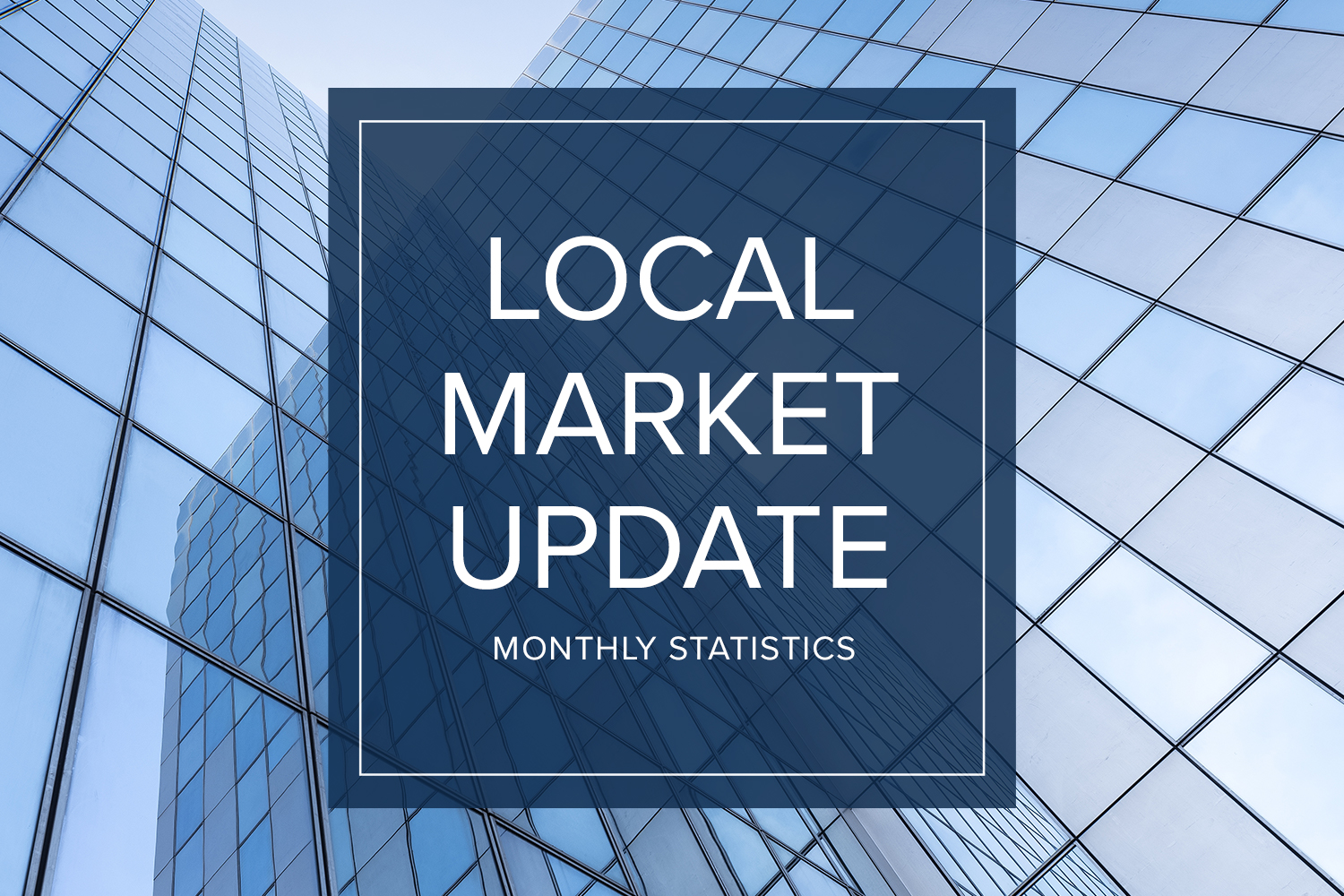
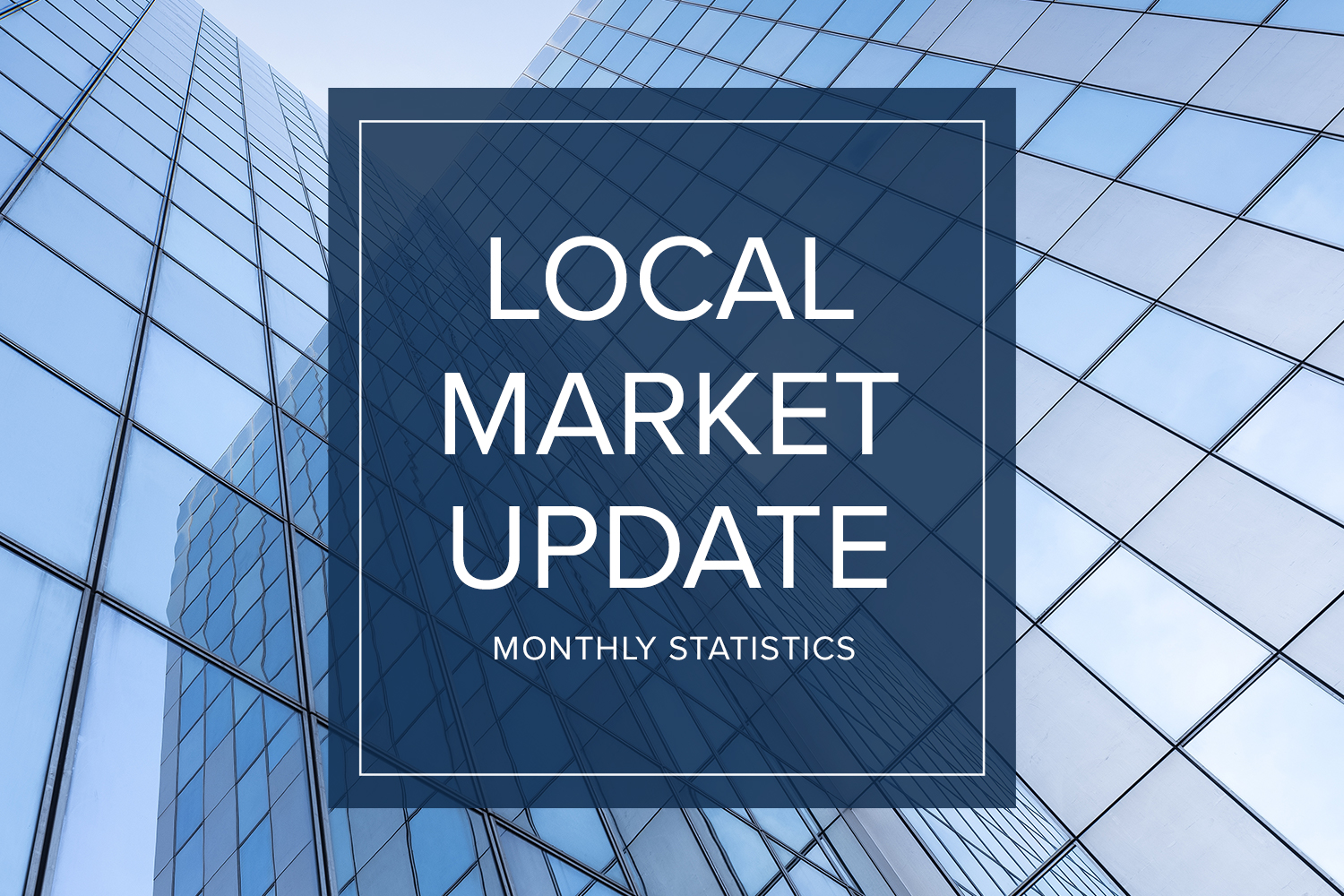
While the pace of daily life may seem slow right now, the
local real estate market has had an unusually busy summer. The number of
new listings in July was up, sales increased, and home prices followed
suit.
• While overall inventory is at historic lows, more sellers put their homes on
the market. New listings of single-family homes in King County jumped more than
25% from a year ago. Snohomish County saw a 7% increase in new listings.
• Pent-up buyer demand fueled sales activity in July. The number of pending
sales was up 17% over a year ago in King County, and up 13% in Snohomish
County.
• With buyers snapping up new listings as soon as they hit the market, total
available inventory dropped to a 10-year low for the month.
• The lack of inventory is benefiting sellers, and multiple offers are now common
at every price point. As a result, single-family home prices rose 7% in King
County and 15% in Snohomish County.
The charts below provide a brief overview of market activity. If you are interested in more information, every Monday Windermere Chief Economist Matthew Gardner provides an update regarding the impact of COVID-19 on the US economy and housing market. You can get Matthew’s latest update here.
EASTSIDE
KING COUNTY
SEATTLE
SNOHOMISH COUNTY
VIEW FULL SNOHOMISH COUNTY REPORT
This post originally appeared on GetTheWReport.com
Could New Seattle Tax Prompt Amazon to Consider Moving?

Once again, Seattle is attempting to leverage a tax on big businesses in the city, potentially ruffling the feathers of some of the city’s corporate behemoths. On Monday, July 6, the city council passed its latest big business tax proposal titled “JumpStart Seattle.” This might just be the last straw for Amazon, according to Windermere’s Chief Economist, Matthew Gardner.
If enacted, the proposal will raise over $200 million a year for the city. It will generate revenue through a tiered system of taxation on companies with payroll expenses over $7 million, although the tax only applies to the salaries of higher income employees. Employers in the lowest bracket will be taxed 0.7% of annual salaries between $150,000–$399,999, and 1.7% of annual salaries exceeding $400,000. The city has devised a separate tier for companies with annual payroll expenses over $1 billion, likely designed specifically with Amazon in mind. Employers in this tier will be taxed 1.4% of annual salaries between $150,000–$399,999, and 2.4% of annual salaries exceeding $400,000.
The tax is similar to the proposed head tax that was passed and quickly repealed by Seattle in 2018 due to the same fears of driving business out of the city. Initially, the proceeds from the new tax will be used to address needs related to coronavirus, but eventually the funds will be directed toward addressing homelessness and housing issues in Seattle.
The problem with the new tax, according to Gardner, is that it wasn’t applied regionally.
“As much as these [taxes] might make sense, they need to be applied on a regional, not citywide basis,” Gardner told KIRO Radio host Dave Ross.
By not coordinating the tax with nearby cities like Redmond and Bellevue, Seattle has only further incentivized Amazon to grow investments in new hubs outside of the city. Notably, after the near-miss with the head tax of 2018, Amazon moved many of its employees and operations to nearby Bellevue in 2019.
Gardner doesn’t approve of Seattle’s attempt to autonomously grapple with this issue. “All it does is it functions to push people out,” he said.
According to CNBC, in June 2020 Amazon announced it would lease 111,000 square feet of workspace for employees in Redmond. Bellevue, meanwhile, is to be the site of a newly built 43-story tower for Amazon operations.
While Amazon hasn’t made any official announcements regarding its plans for future operations in the region since the new tax was passed, Gardner expects we’ll be hearing from them soon. “I think there’s no doubt that we’re going to hear several announcements over the next couple of weeks of some massive expansion by Amazon into Bellevue.”
Though the tax will likely go into effect in 2021, it will not begin collecting money until 2022. Until then, it’s anyone’s guess whether Seattle can entice Amazon to stay put, or if the allure of lower taxes on the Eastside will see Amazon relocating for good.
This post originally appeared on GettheWReport.com
 Facebook
Facebook
 X
X
 Pinterest
Pinterest
 Copy Link
Copy Link
